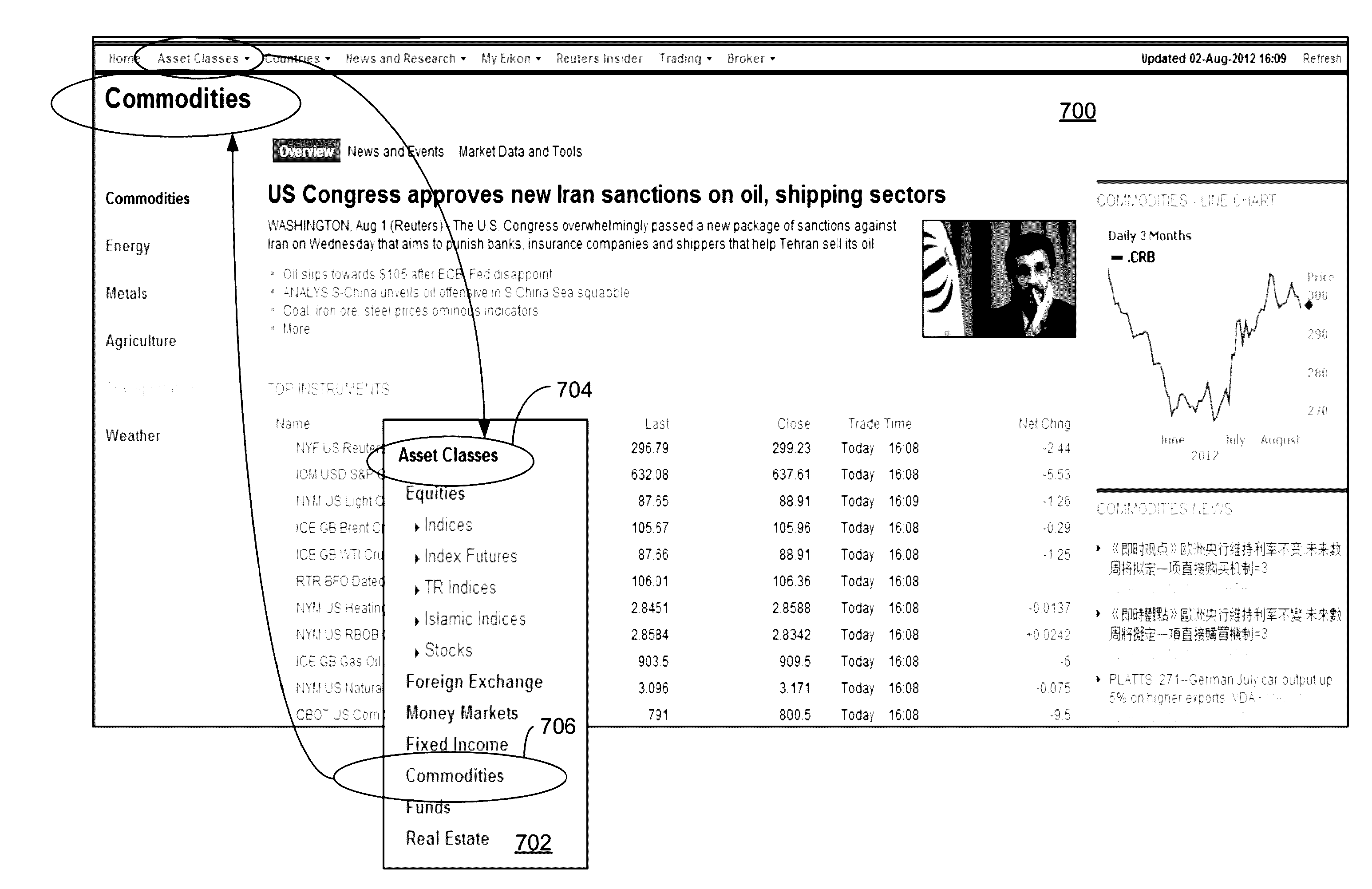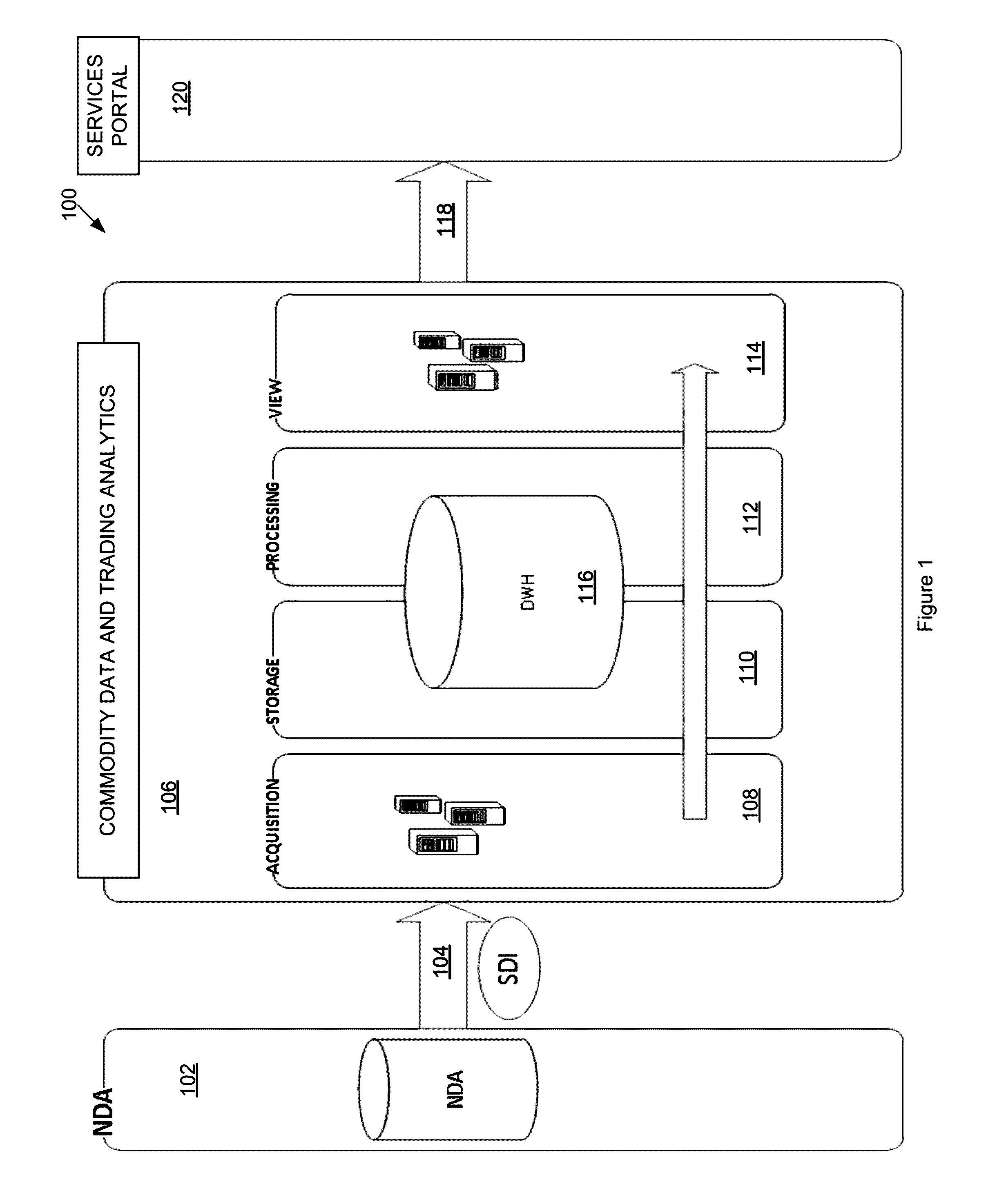Supply chain intelligence search engine
a supply chain intelligence and search engine technology, applied in the field of search engines, can solve the problems of insufficient accuracy of commodity flows in terms of actual commodities, trend likely to continue and worsen, and too late and too aggregated to have significant value in terms of operational trading and investment decisions, etc., to achieve the effect of improving data, analytics and business intelligen
- Summary
- Abstract
- Description
- Claims
- Application Information
AI Technical Summary
Benefits of technology
Problems solved by technology
Method used
Image
Examples
first embodiment
[0159]With reference now to FIG. 37, a supply chain graph 3700 is depicted. The supply chain graph 3700 shows the interrelationship of a set of supplying entities 3710, commodity types 3720, and customer entities 3730. Each customer and supplier entity is represented as a graphical node on the graph. Each node is then connected to another node using a vertex. The vertices represent the supplier / customer relationship of two entities. In the supply chain graph 3700, the commodity type supplied from a supplier entity 3710 to a customer entity 3730 is shown by a vertex passing through a commodity type node 3720. For example, ‘JSC KMPA’ supplies ‘jacks’ to ‘Gazprom.” The graph also shows that ‘Gazprom’ sends the ‘jacks’ to ‘Indian Oil Corporation Limited’ through ‘Gujaret State Petroleum Company.’ Multiple relationships involving may triples from a set of triples returned as the result of a search using an instantiated query can be shown on a single graph. The supply chain graph 3700 use...
second embodiment
[0160]With reference now to FIG. 38, a supply chain graph 3800 is depicted. Supply chain graph 3800 depicts an embodiment of a supply chain graph involving 11 triples to display the complete supplier and customer relationships returned using queries generated by the present invention. The set of triples returned by an instantiated query depict the interrelationships of 12 companies and 8 different commodity types. The set of commodity types 3830 are shown as labels on vertices connecting the set of supplier entities 3820 and the set of customer entities 3820. In the supply chain graph 3800 one such triple used would be (CSR; ethanol; BP), wherein CSR is the supplier, ethanol is the commodity type, and BP is the customer. The graph may be further annotated with the type of relationship between the customer and supplier shown on the vertex. For example, with respect to CSR and BP, the vertex “ethanol” may be further annotated with “manufactures for” or “processes for” to indicate how ...
PUM
 Login to View More
Login to View More Abstract
Description
Claims
Application Information
 Login to View More
Login to View More - R&D
- Intellectual Property
- Life Sciences
- Materials
- Tech Scout
- Unparalleled Data Quality
- Higher Quality Content
- 60% Fewer Hallucinations
Browse by: Latest US Patents, China's latest patents, Technical Efficacy Thesaurus, Application Domain, Technology Topic, Popular Technical Reports.
© 2025 PatSnap. All rights reserved.Legal|Privacy policy|Modern Slavery Act Transparency Statement|Sitemap|About US| Contact US: help@patsnap.com



